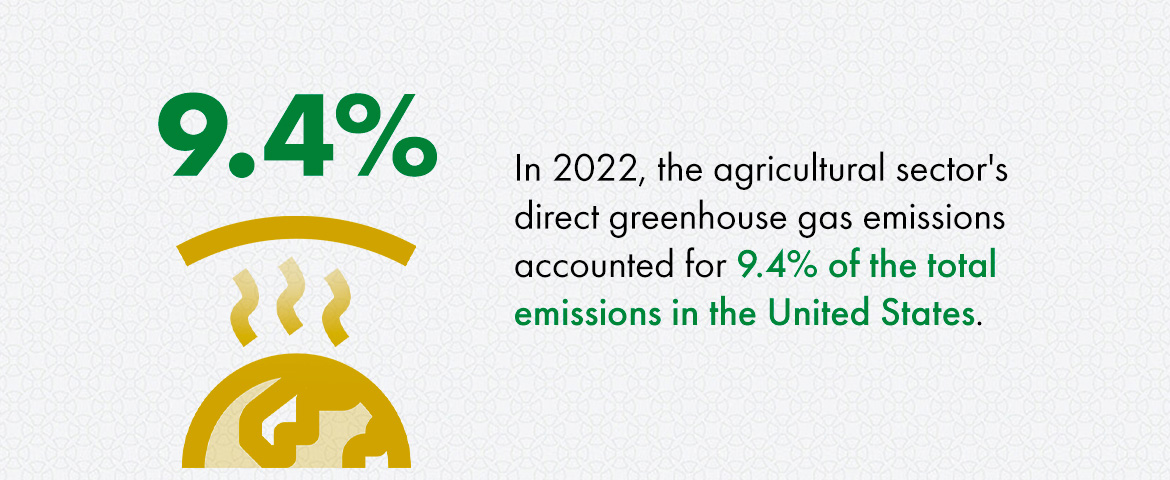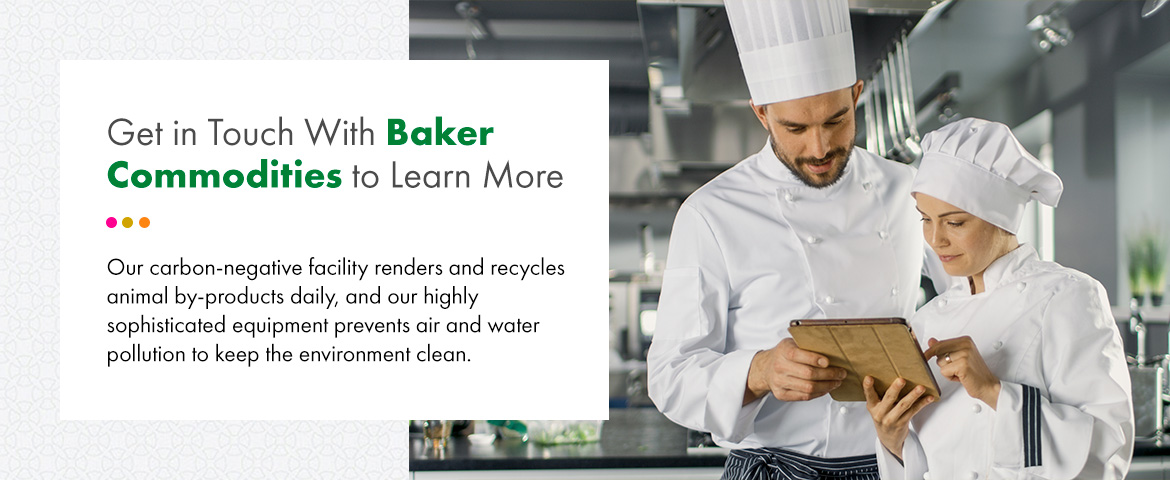The Role of Rendering in Sustainable Food Waste Management
We throw away billions of pounds of unused food every year. Finding sustainable practices to decrease food waste is essential for protecting the environment, and animal rendering offers a promising option.
Understanding Fat and Meat Rendering
Fat and meat rendering, or animal rendering, involves converting animal by-products into usable resources. It allows us to get more use out of unused and uneaten meat products — which is extremely important, considering most Americans deem 50% of an animal inedible.
Your facility can do its part to divert animal by-products from landfills by investing in rendering services. The rendering company will regularly collect animal by-products from your facility and transport them to the rendering plant to upcycle them into entirely new products. The following businesses can invest in rendering services:
- Farms and livestock businesses
- Businesses in the hospitality industry
- Markets and butchers
- Food processors
- Restaurants and food service businesses
- Schools
- Special event and catering companies
Many rendering facilities also offer grease collection and grease trap pumping services. Oil and grease removal is subject to strict legal regulations. Like animal by-products, oil and grease can be recycled to create new goods.
Sustainable Benefits of Animal Rendering
Consider how rendering benefits the environment and can decrease your facility’s environmental footprint.
Reusable Products
Rendering was primarily used to create soap and candles. Today, renderers can upcycle beef, poultry, pork, seafood and lamb by-products to create products like:
- Sustainable pet food: Animals crave parts of animals that we prefer not to eat, including organ meat. These nutritious leftovers can satisfy our pets and help keep them healthy.
- Beauty and household products: Rendered fat can help create detergents, shaving cream, perfume, deodorant, soap and fabric softeners. Additionally, the gel caps on vitamins and supplements are made using gel bone, which itself is made from rendered bone chips.
- Biofuels: These liquid fuels help power trucks, water vessels, trains and other vehicles.
- Animal feed ingredients and fertilizer: In this way, renderers help grow the next generation of food and contribute to a more circular economy.
- Industrial products: Rubber, plastics, cement, ceramics, linoleum, textiles, lubricant and waterproofing materials are also produced using rendered resources.
Rendering uses the entire animal, not just the part that most of us consider edible. This is a major benefit for sustainably-minded people who prioritize eating meat ethically.
Fewer Greenhouse Gas Emissions

The animal agriculture industry contributes significantly to greenhouse gas emissions (GHGs). In 2022, the agricultural sector’s direct greenhouse gas emissions accounted for 9.4% of the total emissions in the United States. With sustainable animal rendering solutions, we could see notable improvements — rendering is carbon-negative and able to sequester five times more GHGs than it emits.
It can reduce GHGs by up to 72%. Try to picture 18.5 million cars — removing all those cars from the road each year is the GHG equivalent of rendering.
Reduced Water Usage
When we waste animal products, we waste water, too. The rendering process reclaims billions of gallons of water and processes it before returning it to the municipal wastewater system. The yearly amount of reclaimed and released water is enough to fill 5,604 Olympic pools. The reclaimed water undergoes a treatment process that meets federal, state and local safety standards.
Plus, renderers can pick up cooking grease and oil from restaurants to prevent municipal wastewater systems from becoming clogged and broken, both of which could cause backups that harm water quality.
Energy Conservation
While the rendering process uses a significant amount of energy, there are also energy-related benefits. For example, upcycling animal by-products to create other items reduces the need to make these items from raw materials and the associated energy-intensive processes. Additionally, rendering facilities often transform animal by-products into biofuels. Biofuels typically power vehicles but can also help generate heat and electricity. Using them could reduce our reliance on traditional energy sources.
Reduced Food Waste and Saving Landfill Space
In a world without rendering, all our available landfill space would fill up in just four years. The food waste that does end up in landfills emits methane, a highly potent greenhouse gas, making food waste a significant contributor to climate change. Animal rendering equips us to divert food from landfills and instead upcycle it into countless useful products.
Challenges and Looking Ahead
Looking forward, rendering plants will likely need to increase output to keep up with the growing population’s growing meat consumption. Other challenges and opportunities for innovation include:
- Finding more energy-efficient processes: While biofuel production and recycling can yield energy benefits, the rendering process consumes significant energy. Plants can look for more efficient ways to process animal by-products and more economical machinery to do the job.
- Preparing to combat animal health and safety concerns: Rendered products protect animal and human health by preventing the spread of pathogens. Federal agencies, such as the United States Department of Agriculture, use rendering to eradicate diseases present in animals. Renderers should remain vigilant and up to date with animal safety news.
- Conducting further research: Research will help enhance rendered products’ safety, find new uses for rendered products or new ways to process animal by-products, and educate the public on the environmental importance of rendering.
The rendering industry will continue evolving alongside consumer preferences and global sustainability goals.
Working With Baker Commodities
Baker Commodities understands the necessity of food waste management, and we’ve remained dedicated to finding sustainable methods for supporting food production companies and restaurants since 1937. When you work with us, we’ll send state-of-the-art trucks to your business and transport your animal by-products to our environmentally friendly recycling facilities. We provide the containers you need to collect fat and bone and will collaborate with you to create a pickup schedule that fits your needs. We also offer emergency services as required.
Using your animal by-products, we can create products like:
- Biodiesel.
- Feeding fats.
- Leather goods.
- Tallow.
- Yellow grease.
- Protein meal.
Whatever animal by-products you have, Baker Commodities can collect them and transform them into usable products. You can also take advantage of our Total Grease Management® services to recycle your facility’s grease and oil and further reduce your environmental footprint.
Get in Touch With Baker Commodities to Learn More
Sustainability is your goal, and it’s ours, too. We’re proud of our status as a completely “green” company, which means we recycle virtually everything we collect. Our carbon-negative facility renders and recycles animal by-products daily, and our highly sophisticated equipment prevents air and water pollution to keep the environment clean.
Contact us for more about our animal rendering or Total Grease Management® services. You can also find services near you!




